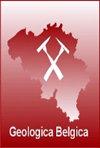Gigantoproductid brachiopod storm shell beds in the Mississippian of South China: implications for their palaeoenvironmental and palaeogeographical significances
IF 0.7
4区 地球科学
Q2 GEOLOGY
引用次数: 10
Abstract
1. IntroductionStorm beds are distinct facies criteria on shelves and ramps, which are generated by storm winds, such as cyclones and hurricanes in tropical latitudes and blizzards in middle and high latitudes (Tucker & Wright, 1990; Flugel, 2004). Ager (1973) defined storm beds as tempestites that are commonly characterized by sharp and erosional base, internal structures including accumulations of shells, graded and flat bedding and parallel and cross lamination, and ripple bedding and burrowing presented at the top part (Aigner, 1985; Flugel, 2004; Dattilo et al., 2012). Tempestites are abundant and widely distributed in carbonate environments during the Phanerozoic (e.g. Einsele & Seilacher, 1982; Flugel, 2004). The sedimentary patterns and biotic distributions of tempestites could provide important information in aspects of their depositional process, palaeoenvironment, palaeogeographical location and even stratigraphic comparison (Johnson, 1989; Lehman & Pope, 1989; Flugel, 2004; Jin et al., 2013). Storm shell beds, which are one common type of tempestites and featured by accumulation of shells, were documented during the icehouse periods of the late Ordovician (Lehman & Pope, 1989; Davis, 1999; Jin et al., 2013), early Silurian (Johnson, 1989; Li & Rong, 2007; Jin, 2008) and early Carboniferous (Jeffery & Aigner, 1982; Butts, 2005) and during greenhouse climate, as in the middle Ordovician (McFarland et al., 1999), late Permian (Simoes & Kowalewski, 1998), early Triass华南密西西比系巨足类腕足类风暴壳层的古环境和古地理意义
1. 风暴床是陆架和斜坡上不同的相标准,是由风暴形成的,如热带纬度的气旋和飓风以及中高纬度的暴风雪(Tucker & Wright, 1990;Flugel, 2004)。Ager(1973)将风暴床定义为暴风雨,通常具有尖锐和侵蚀的基底,内部结构包括贝壳堆积,渐变和平坦的层理,平行和交叉层理,以及顶部呈现的波纹层理和洞穴(Aigner, 1985;Flugel, 2004;Dattilo et al., 2012)。显生宙碳酸盐环境中风暴岩丰富且分布广泛(e.g. Einsele & Seilacher, 1982;Flugel, 2004)。风暴岩的沉积模式和生物分布可以在沉积过程、古环境、古地理位置甚至地层比较等方面提供重要信息(Johnson, 1989;Lehman & Pope, 1989;Flugel, 2004;Jin et al., 2013)。风暴壳床是一种常见的暴风雨类型,以贝壳堆积为特征,在奥陶纪晚期的冰库时期被记录下来(Lehman & Pope, 1989;戴维斯,1999;Jin et al., 2013),志留纪早期(Johnson, 1989;李荣,2007;Jin, 2008)和早石炭世(Jeffery & Aigner, 1982;Butts, 2005)和温室气候时期,如奥陶世中期(McFarland et al., 1999)、二叠纪晚期(Simoes & Kowalewski, 1998)、三叠纪早期
本文章由计算机程序翻译,如有差异,请以英文原文为准。
求助全文
约1分钟内获得全文
求助全文
来源期刊

Geologica Belgica
地学-地质学
CiteScore
4.70
自引率
27.80%
发文量
8
审稿时长
>12 weeks
期刊介绍:
Geologica Belgica is a Belgian journal that welcomes papers concerning all aspects of the earth sciences, with a particular emphasis on the regional geology of Belgium, North West Europe and central Africa. Papers not dedicated to the geology of Belgium, North West Europe and central Africa are only accepted when one of the authors is linked to a Belgian University or Institution. Thematic issues are highly appreciated. In this case, guest editors take in charge the selection of the manuscripts and the subject of the papers can be enlarged. The journal is in open access.
Submitted manuscripts should be concise, presenting material not previously published. The journal also encourages the publication of papers from Belgian junior authors. Short letters are accepted. Papers written in English are preferred. Each mansucript will be reviewed by at least two reviewers.
 求助内容:
求助内容: 应助结果提醒方式:
应助结果提醒方式:


